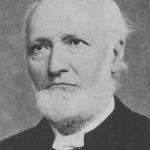
The world of work is undergoing a dramatic transformation. The COVID-19 pandemic accelerated existing trends towards remote and hybrid work models. At the same time, advances in artificial intelligence and automation are fundamentally altering the skills employees need to remain relevant. To navigate these changes successfully, organizations must embrace a flexible mindset that prizes adaptability above all else.
As Abakar Saidov, CEO of AI talent management platform Beamery, told me in our interview: “Flexibility is not about individual preferences. It’s about being flexible to the right way to solve a specific problem.” The future will reward companies that can fluidly realign their operations, workforce planning and employee skill development in response to ever-evolving conditions.
Why Flexibility Matters More Than Ever
The nature of business is changing rapidly. Companies can no longer rely on long-range strategic roadmaps. Instead, they need to continuously scan the horizon for emerging opportunities and threats. Then, they must swiftly pivot their resources and talent to capitalize on the former and mitigate the latter.
This degree of nimbleness requires flexibility. Organizations need to empower their employees to adapt on the fly based on real-time insights. They should provide managers with the autonomy to configure their teams in whatever ways allow them to achieve key objectives, whether that’s fully remote, hybrid or in-office.
Above all, mindsets within the organization must shift from rigidity to openness. People need to recognize that there are often multiple viable solutions to any given challenge, and the best approach may change over time.
Rethinking Work and Job Architecture
To build a flexible organization, companies need to take a fresh look at their work processes and job roles with change in mind.
In our interview, Saidov gave an example of a manufacturing client converging their R&D and IT functions into “digital engineering.” This integration reflects how software and data science are transforming physical engineering disciplines. Had the company clung to established divisions, they would have struggled to leverage these emerging capabilities.
Forward-thinking firms are finding new ways to blend skill sets that had previously been siloed. They are also ensuring roles have some overlap so that employees can cover for each other if needs shift, whether due to automation, changes in workload or the loss of team members.
Empowering generalists over specialists gives companies more options to dynamically reallocate labor. Breaking down rigid job descriptions in favor of adaptable “tours of duty” is another leading practice.
Developing Adaptable Mindsets and Skill Sets
Enabling organizational flexibility starts with building adaptable mindsets across all levels:
- Leaders must become comfortable with uncertainty and be willing to continuously re-evaluate assumptions as conditions evolve. They should encourage experimentation and refrain from top-down, one-size-fits-all mandates.
- Managers require training on leading remote and hybrid teams. As part of doing so, they need to transition from command-and-control supervision to coaching team members as self-directed learners. This helps employees develop the problem-solving muscle they need to adjust on the fly in a more autonomous manner. When I train managers while helping clients figure out their hybrid work transition, they report this training is central to their success.
- Individual employees must take ownership of continuously advancing their skills rather than expecting their employer to chart their career path. Workers should identify adjacent skill areas they could pivot into and pursue developmental assignments or training to expand their capabilities.
In our interview, Saidov predicted that new technologies like generative AI will make it easier for employees to enrich their skills and access new opportunities. For example, AI talent platforms can infer current capabilities based on work history and recommend adjacent skills to build.
Staying Flexible on Location Strategy
The pandemic forced a remote work experiment on a global scale. Many employees wish to sustain increased location flexibility, and companies are still determining optimal policies.
Again, rigidly mandating (or prohibiting) remote work for all roles is not the answer. The right arrangement depends on the work involved, team dynamics and business context. Leaders should empower managers to make collaborative location decisions with each employee based on unique needs.
Location flexibility also applies to sourcing talent. A hiring manager may find the perfect candidate in a different city or even country. Others might benefit from periodically working from team hubs abroad. Instead of limiting talent pools to those able to work on-site full-time, savvy companies are leveraging remote and hybrid arrangements to access specialized skills wherever they reside.
Conclusion
The bottom line is that volatility is here to stay. Companies cannot foresee precisely what the future will bring. But they can build institutional flexibility to nimbly adapt. Saidov aptly compared this to shifting from “rigidity to flexibility.” The organizations that will lead their industries tomorrow are embracing agility today.
They are reconfiguring work and jobs to enhance responsiveness. They are developing adaptable mindsets and skills at all levels. And they are optimizing locations and talent acquisition for business needs rather than inflexible policies. By taking these steps now, your company will be well positioned to solve whatever problems tomorrow throws your way. The only constant is change, so build flexibility into your organization’s DNA.
Key Take-Away
Adaptability is paramount. Embrace institutional flexibility, empower talent, and rethink work structures for success in an ever-changing world…>Click to tweet
Image credit: Jopwell/Pexels
Originally published in Disaster Avoidance Experts on October 19, 2023
Dr. Gleb Tsipursky was lauded as “Office Whisperer” and “Hybrid Expert” by The New York Times for helping leaders use hybrid work to improve retention and productivity while cutting costs. He serves as the CEO of the boutique future-of-work consultancy Disaster Avoidance Experts. Dr. Gleb wrote the first book on returning to the office and leading hybrid teams after the pandemic, his best-seller Returning to the Office and Leading Hybrid and Remote Teams: A Manual on Benchmarking to Best Practices for Competitive Advantage (Intentional Insights, 2021). He authored seven books in total, and is best know for his global bestseller, Never Go With Your Gut: How Pioneering Leaders Make the Best Decisions and Avoid Business Disasters (Career Press, 2019). His cutting-edge thought leadership was featured in over 650 articles and 550 interviews in Harvard Business Review, Forbes, Inc. Magazine, USA Today, CBS News, Fox News, Time, Business Insider, Fortune, and elsewhere. His writing was translated into Chinese, Korean, German, Russian, Polish, Spanish, French, and other languages. His expertise comes from over 20 years of consulting, coaching, and speaking and training for Fortune 500 companies from Aflac to Xerox. It also comes from over 15 years in academia as a behavioral scientist, with 8 years as a lecturer at UNC-Chapel Hill and 7 years as a professor at Ohio State. A proud Ukrainian American, Dr. Gleb lives in Columbus, Ohio. In his free time, he makes sure to spend abundant quality time with his wife to avoid his personal life turning into a disaster. Contact him at Gleb[at]DisasterAvoidanceExperts[dot]com, follow him on LinkedIn @dr-gleb-tsipursky, Twitter @gleb_tsipursky, Instagram @dr_gleb_tsipursky, Facebook @DrGlebTsipursky, Medium @dr_gleb_tsipursky, YouTube, and RSS, and get a free copy of the Assessment on Dangerous Judgment Errors in the Workplace by signing up for the free Wise Decision Maker Course at https://disasteravoidanceexperts.com/newsletter/.













